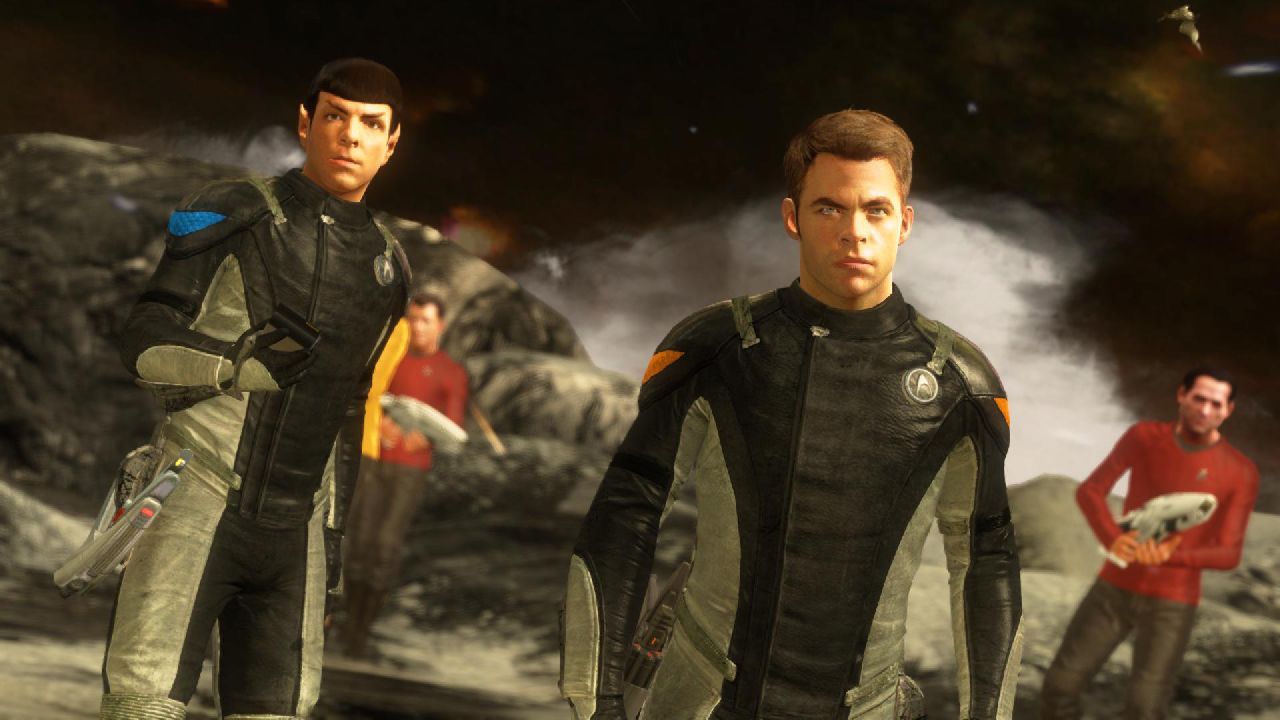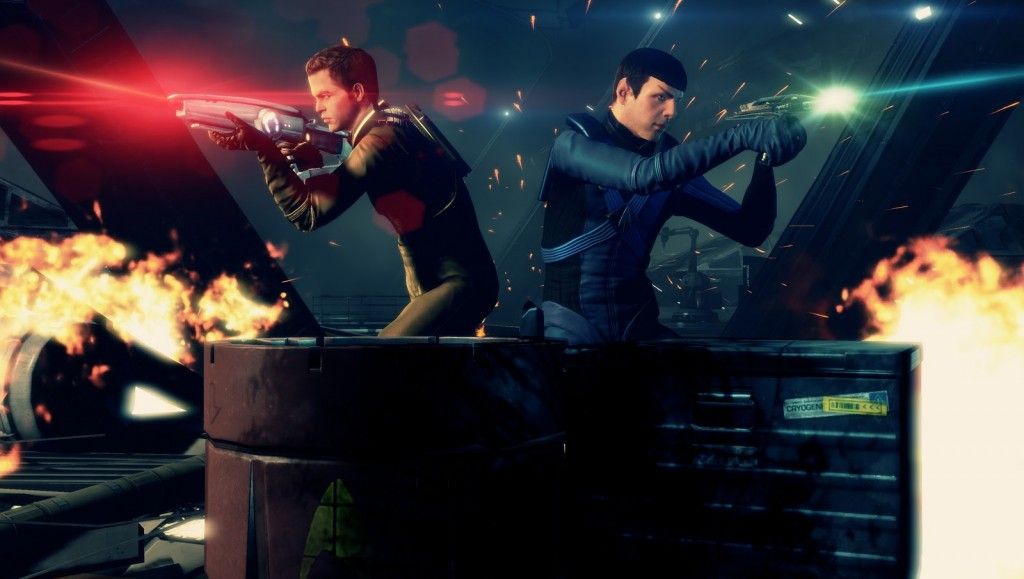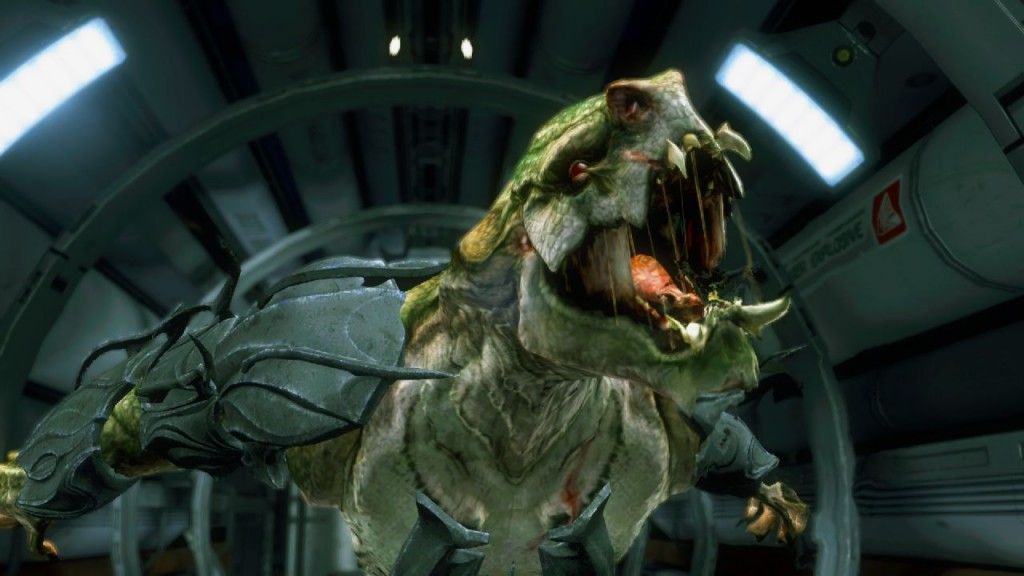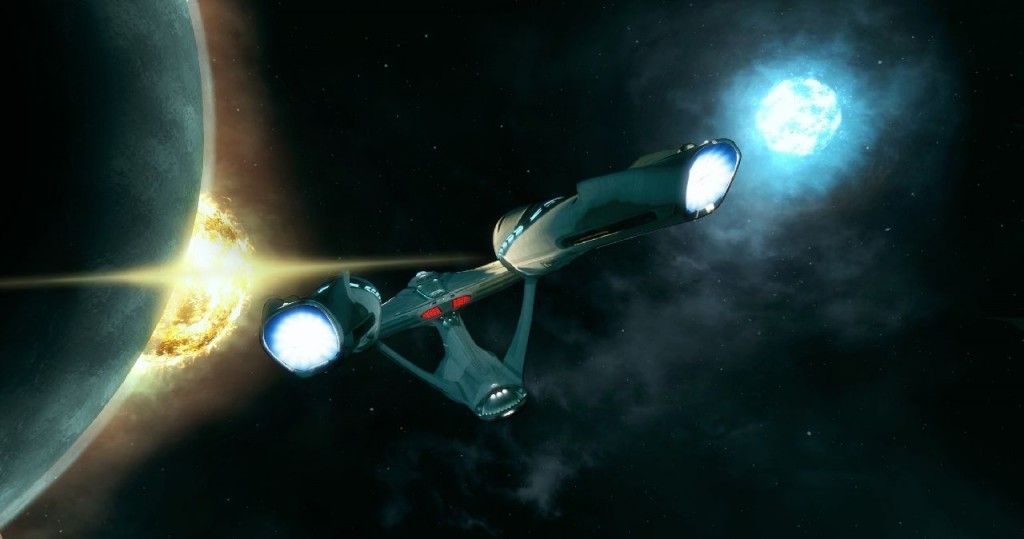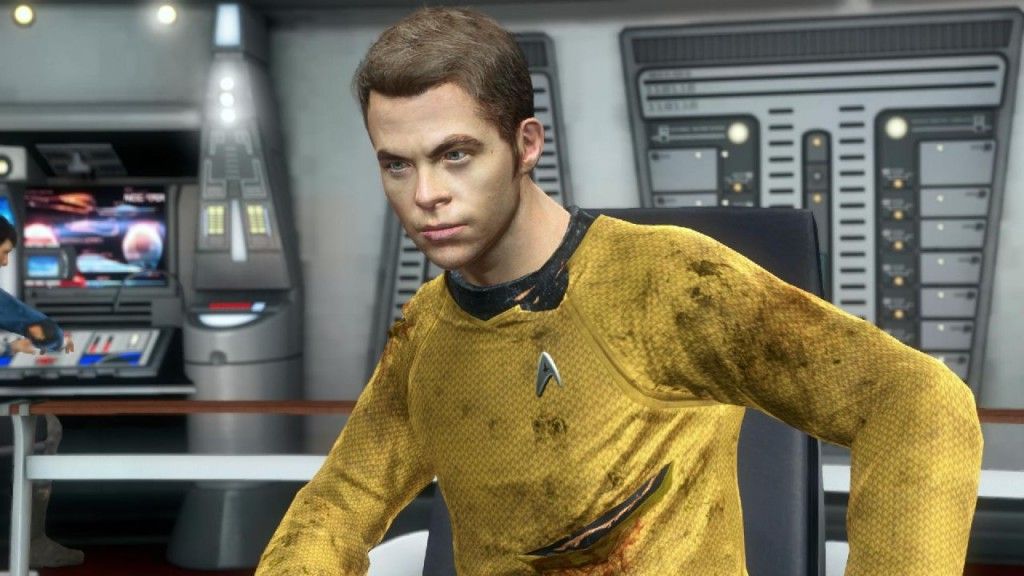If you listen to the ShockCast or know me in person, you will know one thing regarding my feelings towards the 2009 J.J. Abrams-directed Star Trek film: I hated it. Star Trek is a franchise that I am passionate about, and watching one of my favorite franchises turn a trick just to make 400 million dollars box office draw was as infuriating as it was depressing. I suppose you could equate my disdain and disgust for the film with that of the fans that disliked DmC: Devil May Cry and Resident Evil 6.
Why would I review this game? I love Star Trek, and I am interested in everything related to the franchise. I plan on seeing the film’s sequel, Star Trek: Into Darkness, this week. As both a fan of Star Trek and a gamer, there are positive aspects to this game and enjoyment can be gleaned from it from different angles. Overall however, it is dragged down by severe limitations and shortcomings in its gameplay and overall direction.
Star Trek takes place between Star Trek (2009) and Star Trek: Into Darkness. The script was written by Marianne Krawczyk in conjunction with screenwriters Alex Kurtzman and Roberto Orci (Star Trek, Star Trek: Into Darkness, Transformers film series). I have to admit, I was very surprised at the quality in the pacing and depth of Krawczyk’s story (given the subject matter). It captured more of the spirit of not just The Original Series, but Star Trek as a whole. The “shoot first, ask questions never” philosophy of the Abrams universe is not so glaring in this game, as there is more of a focus on investigation, exploration, and understanding the unknown. The characterization of Kirk has also been tuned slightly; he is much more likable in this game compared to the portrayal in the film. Spock, as usual, functions as a perfect foil to Kirk’s brash emotional approach to situations. Fans of Star Trek, The Original Series, and the new film will all find something to like in Krawczyk’s story.
Following the destruction of Vulcan in the 2009 film, it is up to the 10,000 or-so Vulcans left to find a new home so that their race may flourish. The game’s two main supporting characters are Vulcans T’Mar and Surak. The two are responsible for the construction and operation of what is known as the Genesis Helios Device, an instrument that harnesses the power of a star in order to speed up the terraforming process of a planet – in this case it is New Vulcan. When an accident occurs and opens up a rift in space, the game’s sole antagonists, the Gorn, enter Federation space and steal the Genesis Helios Device, knowing that an instrument that has the power to transform the surface of a planet can also be tuned to function as a weapon of destructive power.
The Gorn’s first and only appearance was in The Original Series’ “Arena” – though the characters were briefly mentioned in passing in shows like The Next Generation and Deep Space Nine. Their design is similar to that of The Lizard in 2012’s The Amazing Spider-Man, with a focus on bringing out their animalistic qualities in lieu of a more humanoid approach (though there is a reference to the Gorn seen in “Arena”). There’s a wide variety of Gorn that appear in different shapes and sizes, and the challenges posed by such variety are formidable.
The entire cast from the films all returned to reprise their roles for the game. Chris Pine and Zachary Quinto are actually very good in their respective roles as Kirk and Spock – they both channel the necessary emotions and inflections needed for each scene. The rest of the cast also do a pretty adequate job with the little time that their characters are on screen, as most of the game is obviously focused on Kirk and Spock. Anton Yelchin’s portrayal of Pavel Chekovis is actually tolerable compared to the film. In a complete contrast to the rest of the cast who do an overall good job, Zoe Saldana completely phones in her performance as Nyota Uhura and generally sounds completely disinterested.
The gameplay and overall direction are where the game’s primary issues lie, and they are glaring. Digital Extremes had a lot of ideas – most of them good – that they threw at the wall. The issue is that many of these ideas are rarely used or come across as half-baked or underdeveloped, so what you get is a mosaic of good and bad. For example, one of the most riveting and engaging segments in the game is when you pilot the Enterprise and shoot Gorn ships out of the stars. The very simplistic point-shoot-and raise shields mechanic is punctuated by a tactical mode that allows the player to pick off multiple targets at once with a volley of photon torpedoes and phaser blasts (complete with an epic cinematic). While it sounds quaint on paper, it was something new and exciting and had Star Trek written all over it. However, you only get to do it once.
Most of the time, the game functions like any other cover-shooter – except that its inconsistencies will make it more time-consuming and infuriating, turning a six-hour game into a 10-hour game. You move from one area to the next, shoot some Gorn, maybe you get a cutscene, and then you rinse and repeat. That is, assuming the game does not leave out any crucial instructions or hints as to where to proceed (in a game where nearly every other instruction is spoon-fed and repeated by non-playable characters at least a dozen times). Assuming your A.I. partner does not run out and get downed by enemy fire or off an obstacle and that your attempts to revive him do not also end in tragedy, considering the fact that the revive functionality inexplicably takes forever.
Digital Extremes threw in some other elements in what was seemingly an effort to spice up gameplay, and for the most part they work, but they are also not as involved as they should be. The tricorder for instance, basically functions as Star Trek’s version of Batman: Arkham Asylum/City’s detective mode, since it is used to deduce puzzles and obstacles a la Mass Effect and Dead Space (two games on which many of Star Trek’s mechanics seem to be heavily based). Given the nature of the tricorder’s function in the franchise, it comes off as underutilized and flat – the same goes for the phaser, which has so many more uses than simply a space-gun. The game shows flashes of what could have been a variable and diverse co-op experience, but every time it reverts and degenerates into what can only be described as a monotonous experience.
Out of everything the game offers, the score is what shines brightest. Composed by Chad Seiter (assistant to Michael Giachhino, the composer of Star Trek), it manages to capture the best of Star Trek’s (2009) and The Original Series themes and motifs. The score is much more brassy and engaging than Giachhino’s work on the previous film. At times, combined with some pretty good dialogue from Krawcyzk’s script, the score pulls the game out of the muck and becomes fully immersive.
I could tell that there was a lot that the developers wanted to accomplish with this game, and I would not be surprised if it was rushed at certain points in order to release ahead of the new film (so as to not confuse those who pick it up expecting a bonafide tie-in). Decent voice-acting performances, an excellent score, and some engaging set pieces are simply not enough to keep this game from feeling better than slightly mediocre. In the year 2013 - and at the end of a generation - sophisticated bugs and glitches and under-developed gameplay, all amidst graphics that are simply not up to par, can be described with two words:
Highly illogical.

